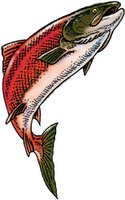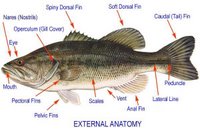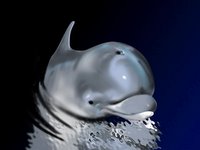The term "Jews" is first used in the Old Testament in the Book of Esther. It refers to the people, primarily members of the tribes of Judah, Benjamin, and Levi, who were exiled from the Land of Israel when the Kingdom of Judah was defeated.
Background: After the time of King Solomon (David's son) the nation of Israel split into 2 kingdoms: the Kingdom of Israel and the Kingdom of Judah. The Kingdom of Judah's capital was Jerusalem, on the border between the tribes of Judah and Benjamin, and included those 2 tribes, and the tribe of Levi (who were very connected to the Temple in Jerusalem). The Kingdom of Israel and the Kingdom of Judah were both defeated and forced into exile. As with most exiled kingdoms, the exiles from the Kingdom of Israel did not maintain any national or religious identity. The Kingdom of Judah, on the other hand, maintained many attributes of a nation, including a connection to a land and a set of beliefs (which of course includes many variations). Many of them returned to the Land of Israel after approximately 70 years in exile, and re-established their kingdom in Israel for roughly 400 years before being defeated by the Romans.
It is true that the Kingdom of Judah (and therefore the Jews) does includes only part of the original Nation of Israel, but 2 relevant points:
- According to the censuses in the Bible, the Kingdom of Judah was similar in size to the Kingdom of Israel, and included more than just the tribe of Judah, so the claim that "Jews" refers to just 1/12 of the original Nation of Israel is inaccurate.
- The Kingdom of Israel was disbursed, and maintained no connection to their original identity. Therefore the Jews constitute the only group that considers themselves to be part of the original convenant between God and the Nation of Israel, and bound by that covenant.
Some other thoughts from the community:
The Land of Israel
In Israel. Read the books of Genesis, Exodus, Judges, 1st and 2nd Samuel and 1st Kings to get a good idea of their early history. They wound up scattered all over Europe because the Romans destroyed their country and deported them in 72 A.D.
Jewish tradition names Abraham as their first ancestor. He came from Ur, and was most likely a tribal leader who brought his people west towards Canaan, a land promised to his descendants by God. Contemporary writings attest to a group of tribes known as "Habiru", "Hapiru" or "Abiru" that came from the deserts and cities of Iran and Iraq. They seem to be separate from the nomads and bedouins we know of today, and held quite a lot of power, and posed a threat to the kingdoms already occupying the lands they passed through. The Bible shows Abraham in contact with several of these kingdoms, possibly as a mercenary, and he bought land in Hebron as a burial ground for his wife and himself.
The Jews were probably a loose confederation of different tribes, some of which went to Egypt during times of famine and gradually came to be slaves until the great Exodus. The Bible makes it clear that there were already kinsmen of theirs in Canaan, when they came back and gradually took over the land of the ancient Canaanites, as promised by God.
Like most other nations, they probably originated as groups of separate peoples, who came together during times of stress, unified by a common God and history.
The Tribe of Judah
The Jews did not originate with Abraham, as the previous writer thought.
The word "Jew" is simply a shortened version of "Judah" (The first mention of the word "Jew" in the Bible is found in II Kings 16:6 which shows Israel at war with the Jews.) They, by themselves, were not "God's chosen people"- the nation of Israel as a whole was, although God later rejected them because they rejected Him.
To think that Israel means Jew is erroneous. All Jews were Israelites, (just as Californians or Texans are American), but NOT all Israelites are Jews. The "Jews" as we know them are descendants of Judah- one of the 12 sons of Jacob, the GRANDSON of Abraham. Jacob's name was later changed to Israel by God, Himself.
All 12 sons had families who grew to become "tribes", ( extended families). All 12 tribes were slaves in Egypt. All 12 tribes left Egypt under Moses and Aaron, and eventually settled in the land of Canaan. For nearly 400 years there was no real Nation of Israel- simply a loose confederation of the 12 tribes. Saul was made the first King of "Israel", about 1090 BC, but it took David, a "man after God's own heart", to actually truly unite the 12 tribes and form the Nation of Israel. After David's death, Solomon ruled and Israel reached its zenith as a nation. Following Solomon's death, however, the people revolted, from the heavy taxation Solomon's successor, Rehoboam instilled upon them. The nation split- with 10 tribes following another leader- Jeroboam, and only the tribes of Judah and Benjamin staying loyal to the House of David, (together with the Levites, who, as keepers of the tabernacle and temple, had no inheritance- no land of their own.)
At this point, the history of Israel as a single, unified nation of 12 tribes ceases, and two separate nations emerge- Israle (The northern 10 tribes), and JUDAH, the southern 2 tribes -plus the Levites.
For over 200 years the two nations existed side by side, sometimes aligning with each other, other times warring with each other, until 721 BC when the nation of Israel was carried away captive by the Assyrians. At that point "Israel" ceased to exist in history. The Assyrians repopulated the area Israel had occupied with foreign captives, who became known as Samaritans.
In 586 BC, Nebuchadnezzar of Babylon carried Judah away captive, and for 70 years they remained captives, under the Babylonian and Medeo-Persian Empires. Cyrus the Great, the Persian emperor issued a decree that all who wished could return to Judah, to "build a house for God", in about 485 BC.
It was THESE captive Jews- remnants of the nation of Judah, who returned, and refounded the nation. These people became known once again as "Jews", which really is a colloquialism, just as Americans are called "Yanks" or New Zealanders are called "Kiwis".
The rest of the nation of Israel- the other ten tribes, taken captive 130 years earlier by the Assyrians- never returned to their land after being taken captive. They became known in history as the "Lost Ten Tribes", although they never were lost. They simply migrated through Asia and Europe, becoming the early ancestors of many European people today.
In summary- the Jews were and are descendants of Abraham, but it is a mistake to say they were Israel of the old testament- they were merely a part of Israel, and later were a separate nation. They WERE and still ARE Israelites, but only constitute 1/12 of the family of Israel. The books of Kings and Chronicles detail the events of the two SEPARATE kingdoms. Ezra and Nehemiah chronicle the events of JUDAH, (The Jews who were taken captive by Babylon), AFTER their return from captivity. The modern nation of Israel, set up by the UN in 1948, mainly consists of descendents of the Tribe of Judah-not the ancient nation of Israel.
reference: www.referencemonster.com










